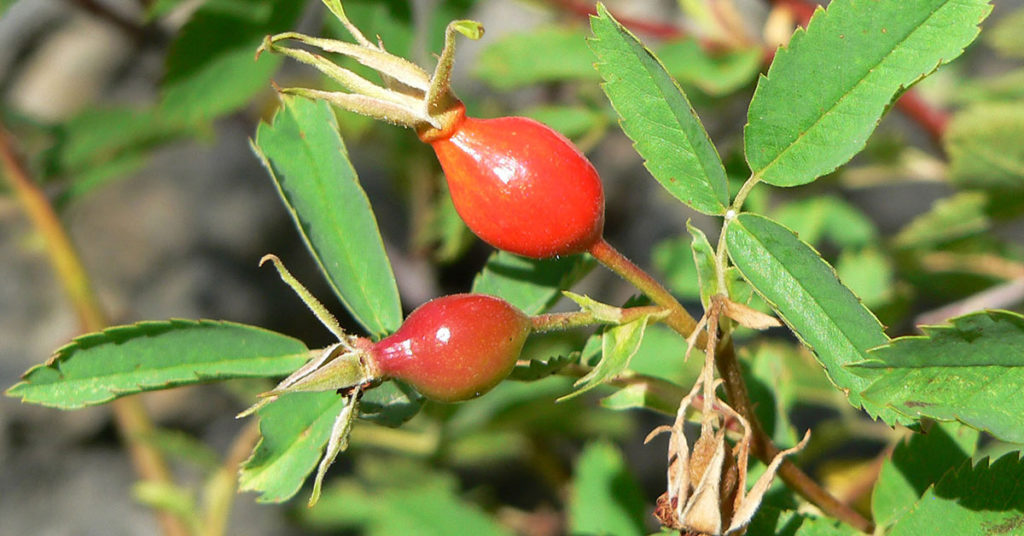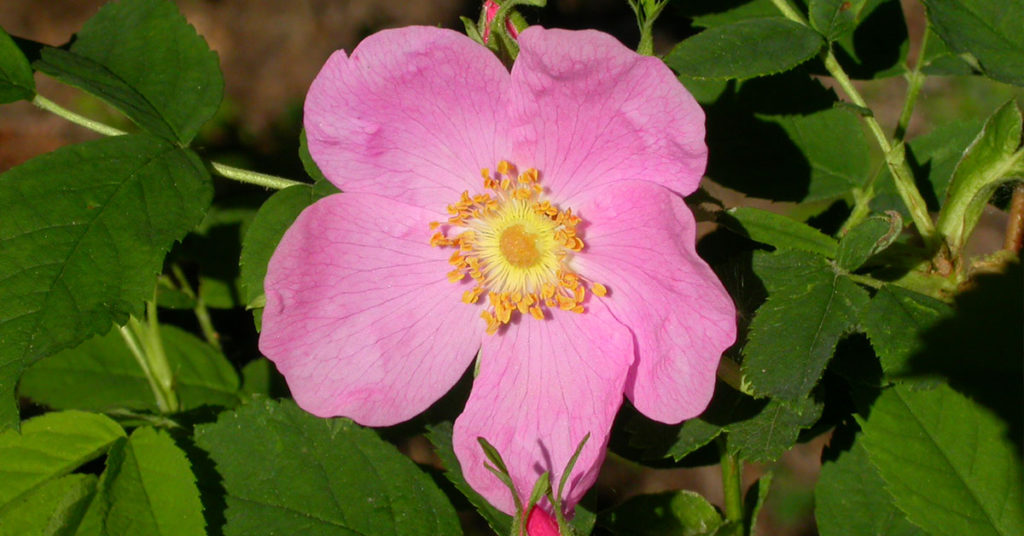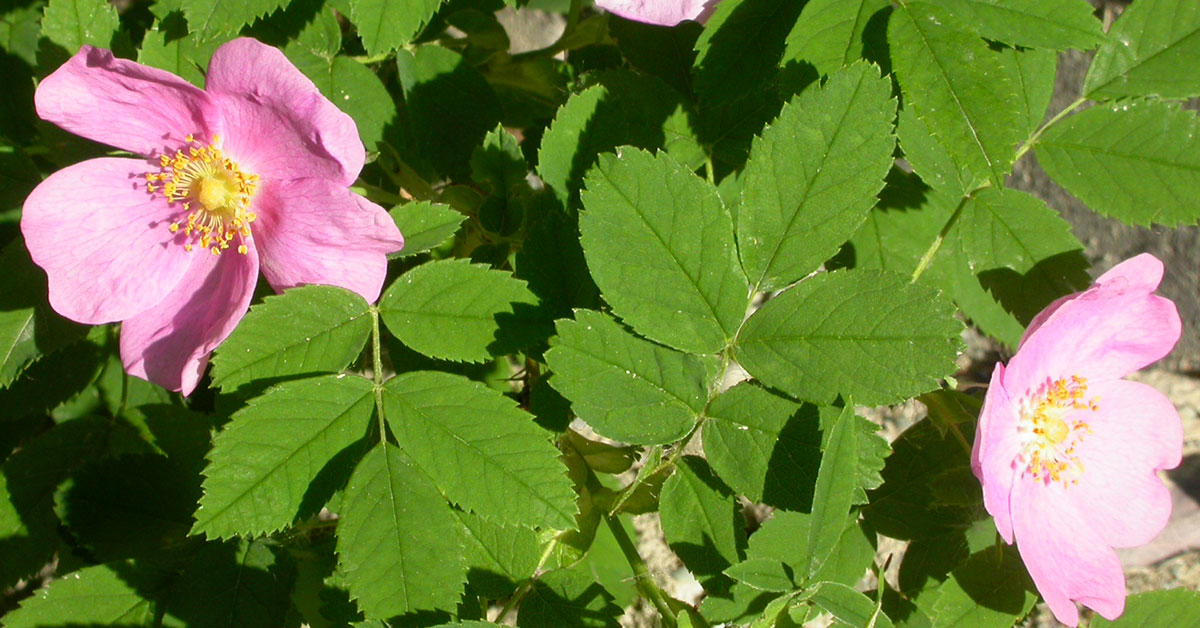Rosa woodsii, also known as woods’ rose, is a wild-growing plant that is an important part of various ecosystems. The plant is a multi-branched, deciduous shrub growing up to 5 feet tall.
What is Rosa woodsii?
Rosa woodsii grows in USDA hardiness zones 3 to 8. Its flowers form from June to July, and the seeds ripen from August to October. The species is hermaphrodite, having both male and female organs, and is pollinated by bees. Its large pink blooms and edible red hips also make a beautiful addition to a home garden. The fast-growing species is tolerant of poor soil and drought-like conditions and responds well to propagation.
- Latin name: Rosa Woodsii
- Other names: Woods’ Rose, common wild rose, pear-hip rose, mountain rose, prairie rose, interior rose.
- Native to: North America, including Canada, Alaska, and Western and central United States.
- Invasiveness: Ma
- Tenderness: No information or evidence is available.
- Sun: Rosa Woodsii grows best in full sun, or partial shade.
- Water: Favors moist conditions but isn’t impervious to water-logging. Can tolerate moderate drought.
- Soil: Best in sandy or light clay soil.
- Hardiness zone: Thrives in USDA hardiness zones 3 to 8.
- When to plant: Best if planted in spring after the last frost or in fall before the first frost.
- Spacing: 18 to 24 inches (45-60 cm).
- Plant height: 2 to 10 ft. (60 cm-3m).
- Bloom period: Flowers bloom between May and July. The fruit matures from August to September.
- Time to maturity: Rosa Woodsii grows to its maximum height within 10 years.
- Container friendly: Extremely container friendly.
- Fertilizer: Apply fertilizer only during the growing season.
- Toxicity: Non-toxic.
- Drought tolerant: Can be drought tolerant.
- Deer resistant: The plant is deer resistant.
- Pest resistant: susceptible to fungal diseases such as leaf spots, leaf rust, gray mold, powdery mildew, stem cankers, and common gal bacteria.
How To Grow Rosa Woodsii
Rosa woodsii can be grown by sowing seeds into pots or flats outdoors in October and November and then shifting them to a greenhouse in January or February. Seedlings should be moved to a lath house or other structure during spring and grown there for a year to help develop an adequate root system before transplanting.
Use a field that hasn’t been planted with any roses before to decrease the chances of infection. Dig a pit twice as big as the pot. Add a small quantity of base fertilizer and place the part where the underground and overground part connects the root ball, slightly higher than the surface of the soil.
Add some organic mulch to help in preserving heat. Backfill and gradually compact the soil. Water thoroughly after transplanting and water generously in the first week to prevent wilting.
Rosa Woodsii can also be grown by hardwood cutting, softwood cuttings, root suckers, or layering. All propagated plants or seedlings should be hardened off for 2-4 weeks before transplanting to the desired location. In the field, young plants should be protected from livestock, wildlife, and rodents.
Rosa woodsii favors moist conditions, though not water-logged conditions. Provide more water from the budding to the flowering stage, but take care to reduce watering after it blooms. After blooming, water only when the soil is dry to avoid accumulation. Ensure that you drain the excess water and provide good ventilation during the rainy seasons to prevent damage to the roots.
Growing Woods Roses In Containers
Growing rose gardens in containers is an elegant method of brightening up outdoor spaces. The potted rose creates a focal point in a garden or adds bold color and fragrance to decks, entranceways, and patios. Growing the plant in containers also allows you to control the growing conditions of the plant. It is a big benefit if you do not have ideal garden soil conditions.
Potted Rosa woodsii should be watered every two days during the growing season but not except winter. Water the plant only when the soil surface is slightly dry. When the plant is weak and semi-dormant in the dry season, water it twice in the morning and at night. Also, take care to avoid too much exposure to sunlight.
When To Plant Rosa Woodsii Seeds
Rosa woodsii seeds appear when the plants are 2-5 years old and can be collected when the hips turn red in September and October. You need to dry and screen them to separate any debris.
The ideal time to sow Rosa woodsii is during the fall. They will germinate by the second year as they need a cold moist period, followed by a warm and moist period, followed by another cold and moist period.
You can store Rosa woodsii seeds for up to five years if you keep them in covered refrigerated containers. After drying and removing debris, sow the seeds without pretreating them in a shallow layer of soil during fall. You can also plant pretreated seeds in the spring. A warm stratification period of 60-90 days at 65-75F followed by chilling the seeds for 90-120 days at 34-40F is necessary for pretreatment.
How To Propagate Rosa Woodsii

Propagation can be done both by division and grafting. The easiest and most successful method of propagating Rosa woodsii is by gently digging up its root suckers and then transplanting. You need to place the plant inside a container filled with sandy or light clayey soil that is moist.
This fast-growing plant will develop a healthy network of roots and be strong enough for a permanent home within weeks. There can be a lot of planting location as the plant is able to adjust to difficult soils and semi-drought-like conditions, and also also to thrive in both sun and shade.
Additionally, you can collect the seed pods of Rosa woodsii.
How to Get a Rosa Woodsii to Bloom

Woods roses can be stimulated to bloom by providing adequate amounts of water and ensuring a minimum of 5 hours of sunlight per day. The more sun they get, the better they’ll perform during its bloom season.
Wildlife attracted by Rosa Woodsii
In nature, birds and other animals usually eat and disperse the seeds of the wood rose. In humid and warm seasons such as spring and summer, various pests and diseases advance commonly. It is recommended that drugs can be used to advance to prevent the plant from getting sick.
Common Problems
Rosa woodsii is vulnerable to prolonged waterlogging. Planting in fields that previously were used for roses increases the chances of infection.
In warm and humid conditions, the plant is susceptible to various pests and diseases. Used drugs and also prune regularly before and after flowering, and also before winter to help reduce unnecessary consumption of nutrients. Excessive rainfall or fertilizer may lead to yellowing. Various pests and diseases also attack in the warm seasons.













